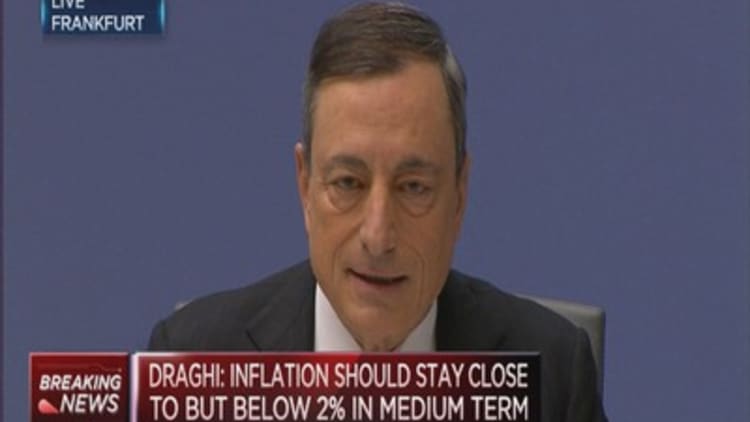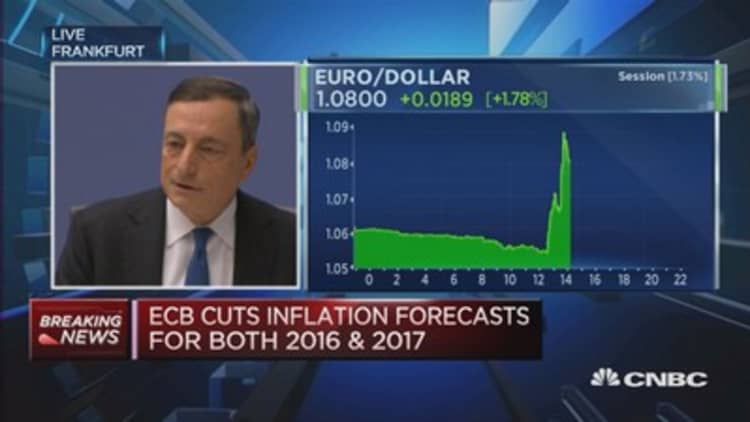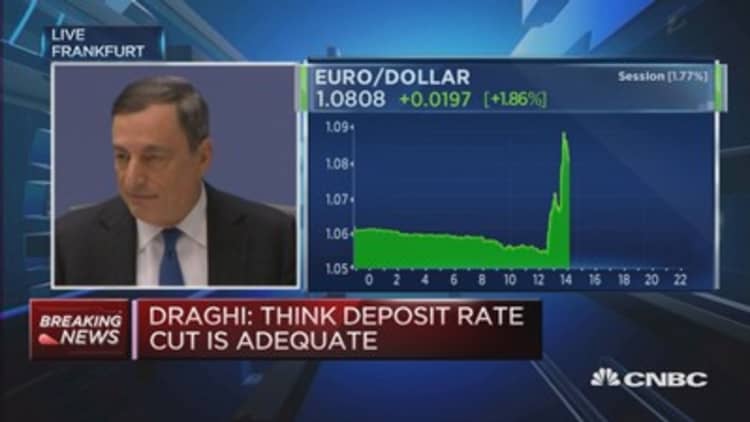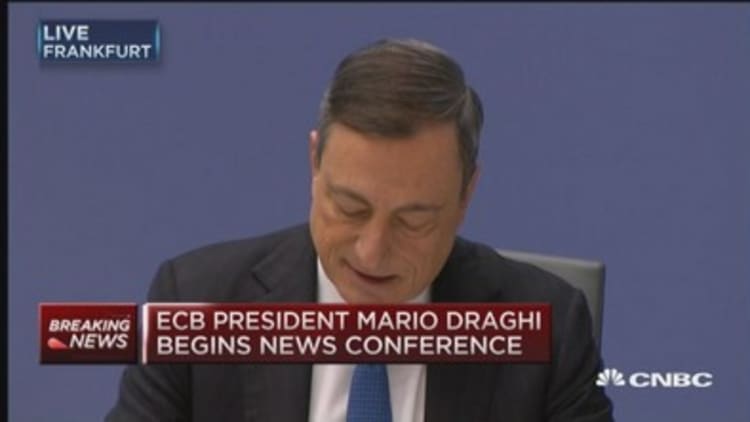




The European Central Bank announced a number of changes to its asset purchase program on Thursday in an effort to fend off sluggish inflation and boost lackluster growth, as it cut its key deposit rate further into negative territory.
ECB President Mario Draghi announced the central bank would extend its massive 60 billion euro ($63.5 billion) a month bond-buying scheme to at least March 2017, speaking in Frankfurt at the press conference which follows its regular policy meeting.
Draghi said the ECB would reinvest the principal payments on the securities purchased under the quantitative easing plan, which he said will help liquidity conditions as well as including regional and local euro area debt in the program. But the central bank stopped short of expanding the amount of bonds purchased by the bank each month.
"This will contribute both to favorable liquidity conditions and to an appropriate monetary policy stance," Draghi told a press conference.
But markets, which had anticipated a deeper cut to interest rates and an increase in its monthly asset purchase program were disappointed by the measures. The euro jumped sharply against the dollar, rallying 2 percent to trade as high as $1.0864 after the announcements, having traded around 0.1 percent down against the greenback at $1.0604 prior to the decision.
Equities tumbled, with the pan-European STOXX 600 sinking close to 3 percent, as markets had hoped for more dovish measures from the central bank chief.
The International Monetary Fund backed the ECB's move and said the central bank should "continue to strongly signal its willingness to act and use all the instruments available until its price stability mandate is met."
Earlier, the ECB cut its deposit rate further into negative territory by 10 basis points to a fresh low of -0.3 percent, down from -0.2 percent. It also revised inflation expectations lower to 1 percent in 2016 and 1.6 percent in 2017.
The cut means banks in effect must pay more for the ECB to hold their money.
The 25-member Governing Council kept its main refinancing rate or the price that banks pay to borrow funds from the ECB, unchanged at 0.05 percent
"We are confident that the decisions are adequate to achieve our objective. The deposit rate cut vastly improves policy transmission," Draghi said, adding that the ECB has a "menu of options" for the asset purchase program and the parameters of the plan will be reviewed again in spring next year.
Analysts suggested Draghi offered markets the "bare minimum of easing", resulting in the sell-off seen in stocks.
"First, he hasn't quite pushed out the 'boat on QE2'! By extending it six months to March 2017, and including regional and local debt, his sign of intent is he will do more. But, by not upping the pace, at just 60 billion euro purchases per month, and excluding other assets such as more corporate bonds and mortgage debt, he is keeping some powder dry," said group chief economist at Hermes Investment Management, Neil Williams.
The ECB first launched its quantitative easing (QE) program in March this year to help push inflation back towards the targeted 2 percent level and boost liquidity in the 19-country euro zone.
Eurostat said consumer prices in the 19 countries sharing the euro stayed at 0.1 percent in the year to November in its flash estimate on Wednesday.



